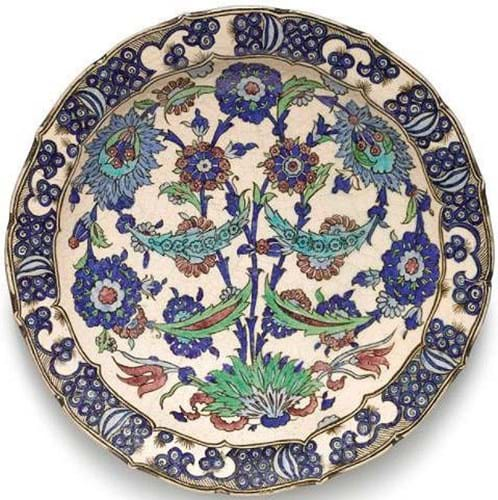
1 How did you get your start?
In late 1997 I found out which agency Christie’s used for their temp workers, signed up and was in the right place at the right time when Spink needed a temporary porter for their Asian art department in March 1998. I passed the interview and then the job was made permanent two months later.
I worked for all four Asian departments until their demise in 2001 when Simon Ray, the Indian & Islamic department director of Spink, asked if I wanted to join him at his new gallery opposite.
2 What are some recent collecting trends?
The polarisation of the Islamic ceramics market continues apace, with the rare and exceptional commanding significant prices while the middle ground and more common designs sometimes struggle even with realistic estimates. Second-guessing auction values seems to be becoming harder and harder, with a distinct air of randomness associated with some eye-watering results.
3 What is one great discovery you’ve made?

Plate commissioned by the V&A in 1897 for study use and made in Qajar period Iran.
I recently found a plate in Germany catalogued as a generic Turkish Iznik copy which I realised was actually a piece commissioned by the V&A in 1897 for study use and made in Qajar period Iran (plate shown above).
4 One lesson you would pass on to others in the trade?
I had an interview for the Christie’s graduate scheme before I worked for Spink and was shocked to find out that they were far more interested in a background of languages than the history of art qualification I possessed.
A tip for any aspiring dealer or auctioneer perhaps.
5 What is one thing you couldn’t do without?
I love my slide calliper for measuring the size of difficult sculptures.
If you would like to be featured in 5 Questions, please contact francesallitt@antiquestradegazette.com









